In an earlier post, we provided a general overview of Remote DX and Scoutbees, the two new additions to Advanced Monitoring for VMware Horizon Powered by ControlUp. In this article, I will show you how easy it is to enable and use Scoutbees, a synthetic monitoring solution from ControlUp. One reason we are really excited about Scoutbees is that it allows you to start monitoring the availability of your Horizon desktops and streaming applications in less than five minutes!
Why You Should Use Scoutbees
One of the more frustrating issues with remote work from an end user’s perspective is trying to access an online resource (such as a Horizon virtual desktop, streaming application, or SaaS application like Microsoft Teams) only to find that it is unavailable. Even more frustrating, a user can potentially waste a considerable amount of time taking some standard connection troubleshooting steps – checking their internet connection, clearing their web browser cache, and even rebooting your system – only to find that the resource that they were trying to access is down or unreachable.
To prevent this situation from happening, ControlUp created Scoutbees, a solution which monitors online resources and then alerts you when they are down or not performing as well as expected. Not only does it give you real-time visibility to remote resource availability, but it keeps a historical record of these resources so you can identify problematic resources or infrastructure.
Scoutbees, as you will see shortly, is extremely easy to use, and it is cloud-based with an on-premises option. You don’t need to install anything in your environment, use any of your IT resources or manage or update it – you simply need to use it! In fact, most people can have it up and running in less than five minutes.
What Insights Does Scoutbees Provide
I asked the folks over at ControlUp how they are using Scoutbees. They informed me that they have Scouts (their term for tests) set up to not only monitor their own resources but also ones they use on a regular basis to demonstrate their products, such as the VMware TestDrive portal. Scouts can check the availability of remote resources from various locations, or Hives, around the world.
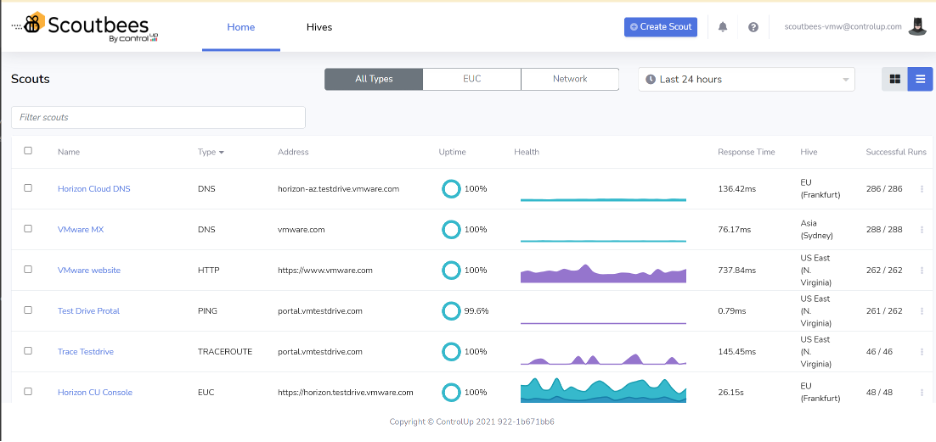
For example, they use a Scout from a Hive based in Frankfurt, Germany to check the availability of a ControlUp Real-Time Console that is being streamed from a US-based TestDrive. As shown below, upon clicking it, they can see that it had four failures in October of 2021. It also displays other information such as the fact that the average time to bring up a session was 24 seconds.
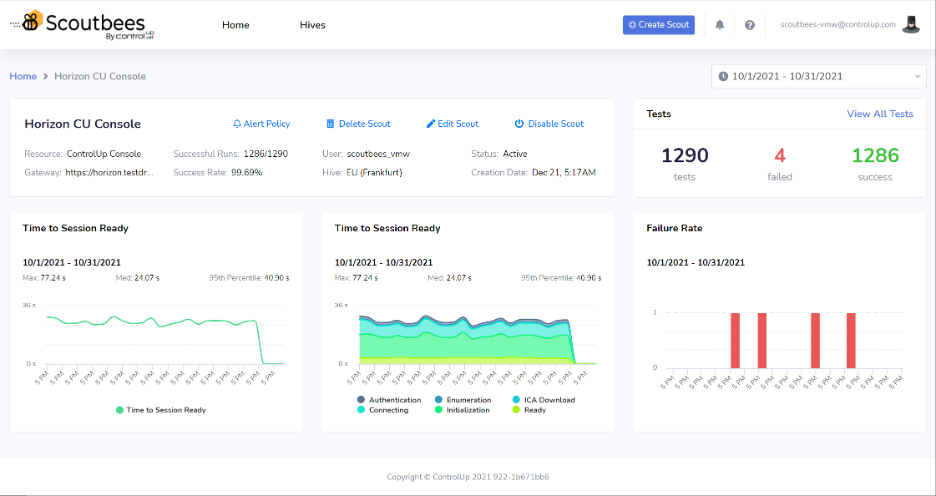
Clicking one of the failures gives more information about why it was reported as a failure.
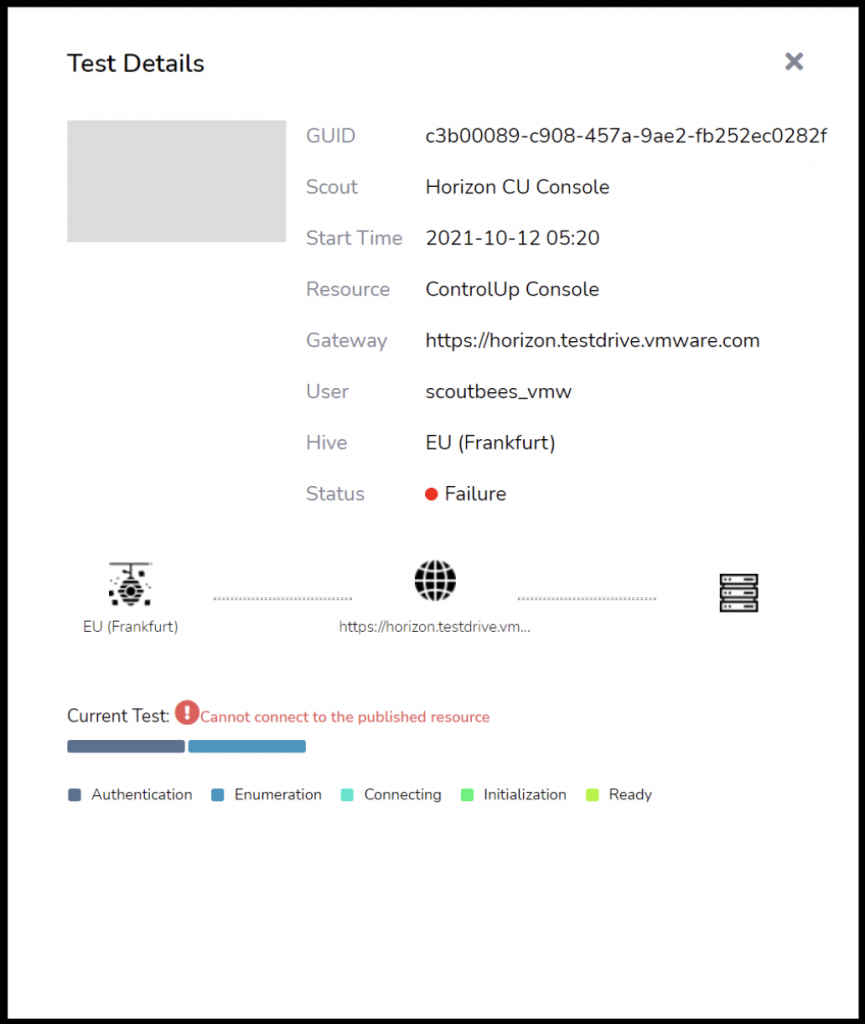
As you can see, it also graphs detailed information on the remote resource such as the time it took for authentication, connection, and initialization.
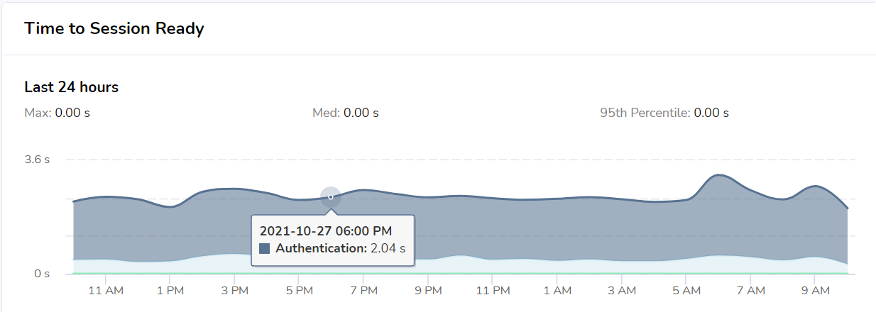
Getting Started Monitoring your Assets in 5 minutes in 3 Easy Steps!
1. Accessing Scoutbees and Signing Up for a Trial of Scoutbees (if needed)
Scoutbees can be accessed in multiple ways: directly from a URL, from the ControlUp Real-Time Console, or from Solve. For this article, I will demonstrate accessing it from the Real-Time Console. To follow along you can download VMware Advanced Monitoring for Horizon powered by ControlUp, from your MyVMware.com portal for a free 90-day Trial License.
From the Real-Time Console, select Scoutbees Synthetic Monitoring from the ribbon bar.

After clicking Scoutbees, you will be given the option to sign up for a trial if you haven’t already created a Scoutbees account.
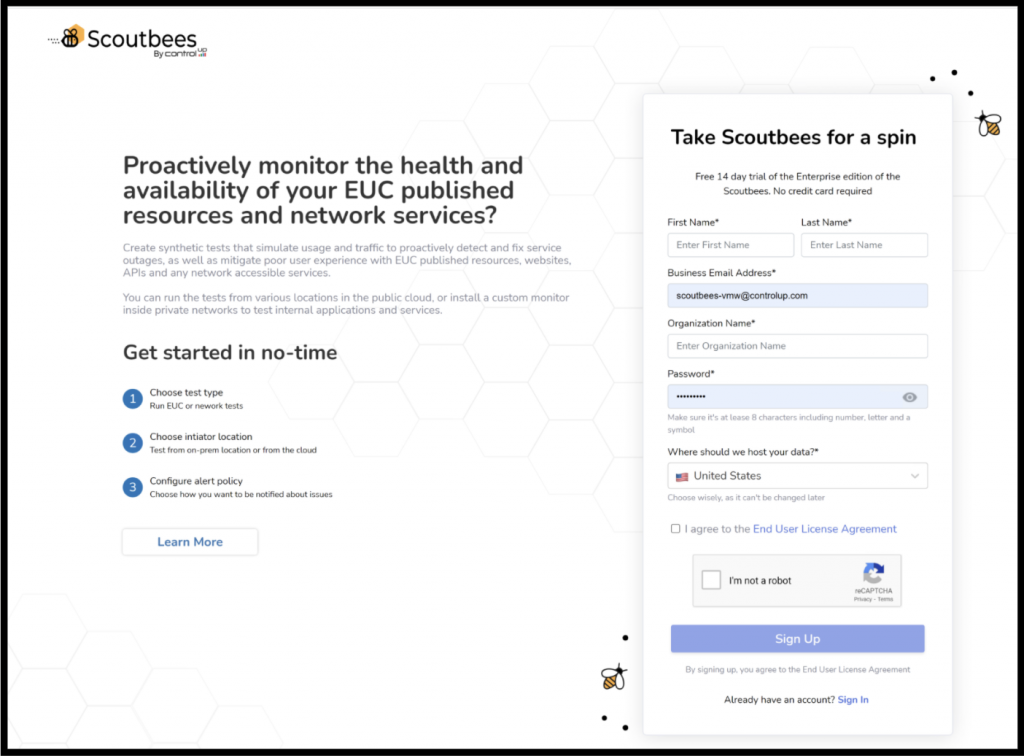
It takes just a minute to sign up and gain access to Scoutbees.
2. Setting up Your First Scout
Setting up a new Scout is extremely simple as a wizard walks you through the process by asking you questions such as the location of the Hive (i.e., the location that you want to test from) the location of the resource, the account that you want to use to test it, and how often you want to test the resource (every 5, 15, 30 or 60 minutes). You can see all of this in the picture below.
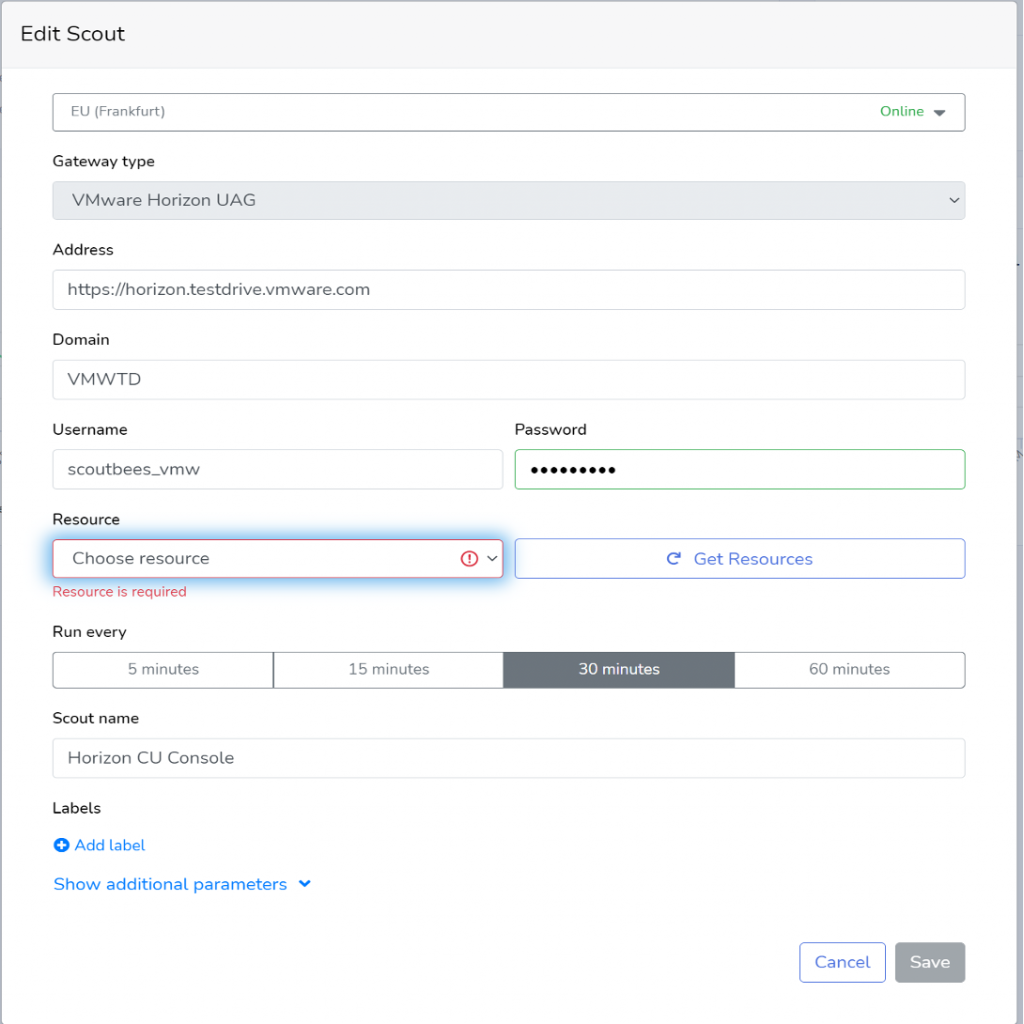
It then goes out and probes the IP address for the resources (i.e., desktops or applications) that you want to check the availability of. With the drop-down menu you can choose the resource you want to check. The picture below shows a few options to choose from.
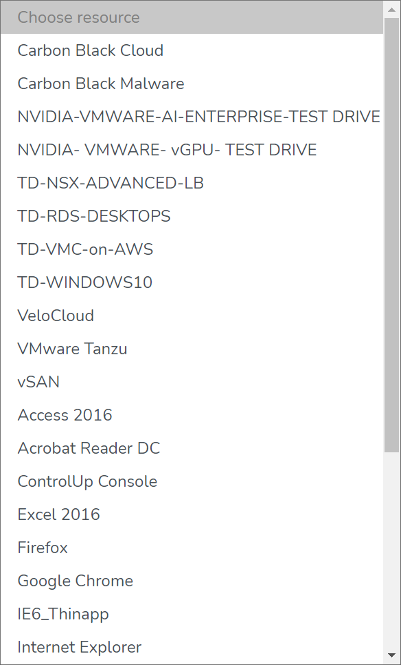
That’s all there is to it.
3. Setting up an Alert Policy
Setting up a notification to proactively alert you when a resource is having issues is just as easy. You click Alert Policy and set up the conditions that would set off an alert and how you want to be contacted.

As alluded to earlier, you can also monitor network infrastructure via ping, traceroute, DNS lookup, or HTTP/S using the same mechanics.
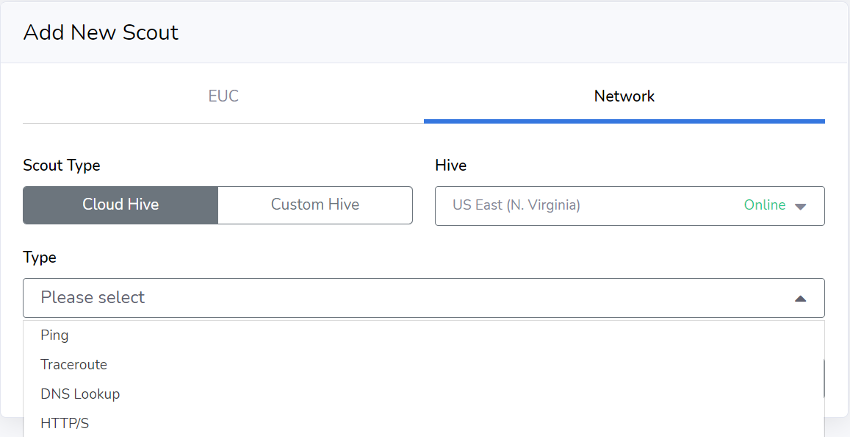
Closing
If you have resources inside your data center that need to be checked or have corporate governance that prevents you from using cloud-based applications, ControlUp has an on-premise version of Scoutbees that it refers to as Custom Hives that installs on Windows.
Assisting remote workers can be tough, but through our relationship with ControlUp, we have given the power in your hands to simplify the challenges. Remote DX monitors the last mile of connectivity that remote workers use and Scoutbees ensures that the remote resources are available for them to connect to. These two products, when coupled with the ControlUp Real-Time Console and Solve, allow you to monitor Horizon from end-to-end to ensure that remote users have an unparalleled remote digital experience.
To try out VMware Advanced Monitoring for Horizon Powered by ControlUp, please visit your MyVMware.com portal, click here for a free 90-day trial license, or contact your VMware sales professional.









